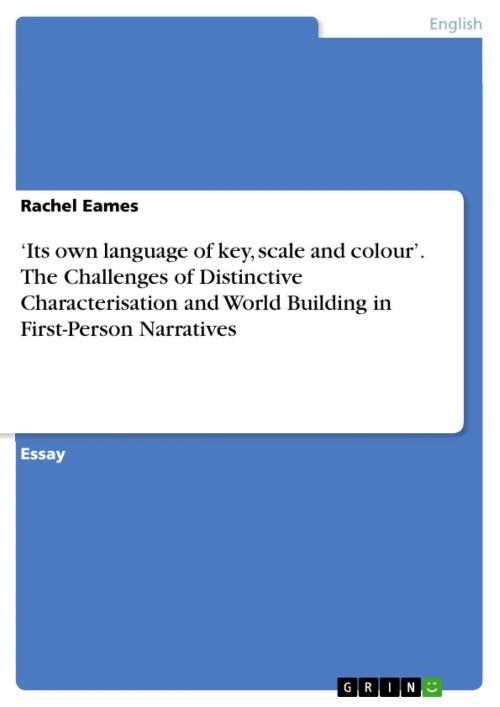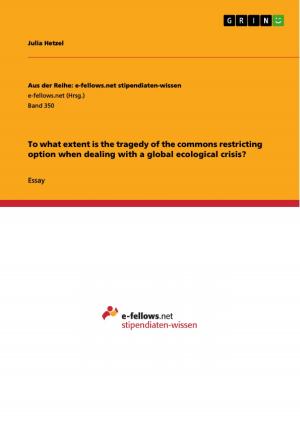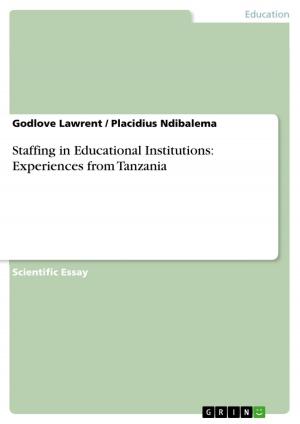'Its own language of key, scale and colour'. The Challenges of Distinctive Characterisation and World Building in First-Person Narratives
Fiction & Literature, Literary Theory & Criticism, British| Author: | Rachel Eames | ISBN: | 9783668240223 |
| Publisher: | GRIN Publishing | Publication: | June 13, 2016 |
| Imprint: | GRIN Publishing | Language: | English |
| Author: | Rachel Eames |
| ISBN: | 9783668240223 |
| Publisher: | GRIN Publishing |
| Publication: | June 13, 2016 |
| Imprint: | GRIN Publishing |
| Language: | English |
Essay from the year 2014 in the subject English Language and Literature Studies - Literature, grade: 1.1, University of Birmingham, course: BA English with Creative Writing, language: English, abstract: 'Each in its own language of key, scale and colour,' says David Mitchell's composer, Robert Frobisher, describing his magnum opus, 'The Cloud Atlas Sextet'. 'Revolutionary or gimmicky? Shan't know until it's finished' (2004, p.463). Here David Mitchell captures the artistic process he knows well; Frobisher's medium is the music of 'cello, flute, oboe and violin', but if Frobisher was a writer, he could easily be talking about character voices. Indeed, the sextet is a microcosm of Cloud Atlas (2004) itself, sharing a name and concept with the Russian doll of nested narratives, each narrator vivid and distinguishable from the last. The first-person narrative mode offers a range of possibilities for a novelist. Mitchell calls it 'the most intimate voice' (Pauli, 2004), and 'Cloud Atlas' showcases the flexibility of the mode across a range of settings, genres and time periods. Other novelists, such as Barbara Kingsolver, see the subjectivity of the first-person as an opportunity to explore different perspectives of events. 'The Poisonwood Bible' (2008) follows a rotational narrative of contrapuntal chapters, from the point-of-view of each of the women in the Price family, to 'create a moral conversation' (Kingsolver, 2012). My own novel, 'Fairweather' (2014), a historical detective novel set in Victorian London, told in part from the perspective of a serial conman and opportunist, experiments with the flexibility of a single voice. Though very different, both in genre and structural approach, each of these novels uses the 'key, scale and colour' of language to bring life to their narrators and the stories they tell.
Essay from the year 2014 in the subject English Language and Literature Studies - Literature, grade: 1.1, University of Birmingham, course: BA English with Creative Writing, language: English, abstract: 'Each in its own language of key, scale and colour,' says David Mitchell's composer, Robert Frobisher, describing his magnum opus, 'The Cloud Atlas Sextet'. 'Revolutionary or gimmicky? Shan't know until it's finished' (2004, p.463). Here David Mitchell captures the artistic process he knows well; Frobisher's medium is the music of 'cello, flute, oboe and violin', but if Frobisher was a writer, he could easily be talking about character voices. Indeed, the sextet is a microcosm of Cloud Atlas (2004) itself, sharing a name and concept with the Russian doll of nested narratives, each narrator vivid and distinguishable from the last. The first-person narrative mode offers a range of possibilities for a novelist. Mitchell calls it 'the most intimate voice' (Pauli, 2004), and 'Cloud Atlas' showcases the flexibility of the mode across a range of settings, genres and time periods. Other novelists, such as Barbara Kingsolver, see the subjectivity of the first-person as an opportunity to explore different perspectives of events. 'The Poisonwood Bible' (2008) follows a rotational narrative of contrapuntal chapters, from the point-of-view of each of the women in the Price family, to 'create a moral conversation' (Kingsolver, 2012). My own novel, 'Fairweather' (2014), a historical detective novel set in Victorian London, told in part from the perspective of a serial conman and opportunist, experiments with the flexibility of a single voice. Though very different, both in genre and structural approach, each of these novels uses the 'key, scale and colour' of language to bring life to their narrators and the stories they tell.















